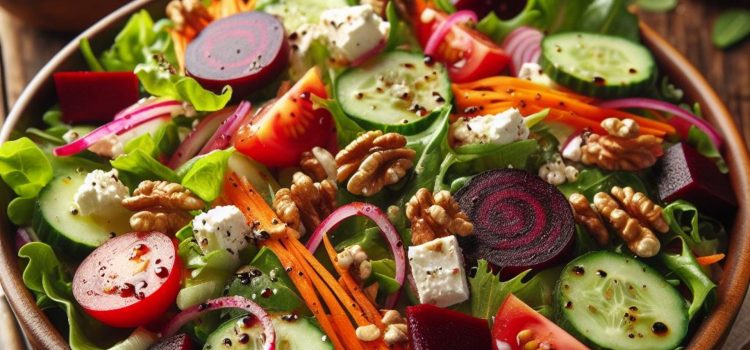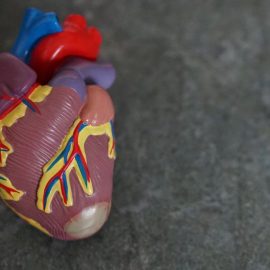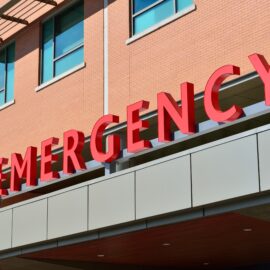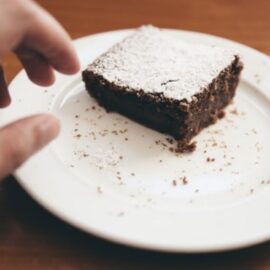

This article is an excerpt from the Shortform book guide to "Fast Like a Girl" by Mindy Pelz. Shortform has the world's best summaries and analyses of books you should be reading.
Like this article? Sign up for a free trial here.
Are you currently intermittent fasting? What types of foods should you eat on this diet?
When you’re finished with your intermittent fasting, you may be tempted to eat foods that are bad for you. If you choose healthy meals, you increase the chances of experiencing the benefits of fasting.
Find out the foods to eat while intermittent fasting.
Pay Attention to What You Eat
While fasting alone offers benefits, paying close attention to your post-fast meals can elevate those gains. Mindy Pelz explains that being mindful about what you eat can prolong and enhance the positive effects of fasting. She suggests two key pieces of advice, in terms of foods to eat while intermittent fasting:
1) Prioritize healthy, organic foods over processed, chemical-laden ones, such as those containing hydrogenated oils, preservatives, or artificial dyes and flavors. Consuming nutrients in their natural form enables efficient absorption without the burden of processing harmful additives, thereby minimizing the cleanup workload for your body. (Shortform note: Michael Greger (How Not to Diet) adds that you should avoid highly processed foods because they’re never good for your health—they cause numerous diseases and can desensitize your palate, making natural foods less appealing. They’re also engineered to encourage overeating, which disrupts your body’s hunger and fullness cues.)
2) Maintain stable blood sugar levels by balancing your intake of complex carbohydrates (including fiber), grass-fed proteins, and “good” fats (such as olive oil, nut butter or oil, or grass-fed butter). According to Pelz, this supports a smooth transition from the fasting state and prevents energy crashes by slowing the absorption of glucose into your bloodstream.
The NOVA Food Quality Guidelines
While Pelz offers strict dietary guidelines, Stephens (Fast. Feast. Repeat.) stresses that restricting your diet makes it more difficult to stick to, and that meal timing is ultimately more important than what you eat. However, she adds that this doesn’t mean that food quality is unimportant—what you eat directly impacts how quickly your body enters and benefits from ketosis during fasting. Stephens suggests using the NOVA classification system, a set of guidelines devised by researchers from the University of São Paulo, Brazil:
- Category 1: Unprocessed foods, including whole fruits, vegetables, and meats
- Category 2: Processed culinary ingredients, such as salt, flours, butter, and oils
- Category 3: Processed foods, including bread, cheese, pickles, and canned foods
- Category 4: Ultra-processed foods, such as sugary cereals, ice cream, soft drinks, and “instant” meals like cup ramen
Stephens advises sticking mainly to categories 1 through 3, though she allows for selective enjoyment of your favorite category 4 items. In contrast, the researchers suggest avoiding them altogether, if you can.
Break Your Fast With Foods That Support Your Goals
To further enhance the benefits of fasting, Pelz suggests that the first foods you eat to break your fast should complement your fasting goals:
- If you’re attempting to lose weight, break your fast with “good” fats, such as those found in avocados, bone broth, nuts, or olives. These fats stabilize blood sugar levels and don’t disrupt the fasted state, allowing your body to continue burning body fat.
- If you’re trying to build muscle, break your fast with protein-rich foods, such as eggs, beef jerky, chicken, broccoli, mushrooms, chickpeas, or plant-based protein shakes. This will provide your body with amino acids essential for muscle repair and growth.
If you’re aiming to balance gut microbiomes, break your fast with foods that are rich in probiotics, prebiotics, or polyphenols. Probiotic-rich foods introduce beneficial bacteria into your gut, prebiotic foods nourish these bacteria, and polyphenol-rich foods help repair the gut’s lining. Suitable foods include broccoli, seeds or seed oils, and fermented foods like yogurt.
Guidelines for Breaking a Fast
Pelz bases these recommendations on feedback from her fasting community. While research substantiates the correlations between the foods and the health benefits she describes, there’s limited scientific evidence supporting the argument that the first foods consumed to break a fast can contribute to specific goals.
However, the first meal you consume does impact how you benefit from fasting and how easily you transition back to regular eating. Specifically, experts point out that starting with a large meal can put too much pressure on your digestive system, causing you to feel sluggish and bloated. They offer the following guidelines for easing yourself out of the fasting state:
- Begin by drinking water or broth to help rehydrate your body and prepare your digestive system for food.
- Consume a light snack, such as a piece of fruit or a handful of nuts. This will help reintroduce food to your digestive system without overwhelming it.
- Wait 30 minutes to an hour to give your body time to adjust.
- Eat a balanced and nutritious meal, including a source of lean protein, cooked vegetables, and a small portion of complex carbohydrates.
- Resume your regular eating schedule—stay hydrated and pay attention to your body’s hunger and fullness cues.

———End of Preview———
Like what you just read? Read the rest of the world's best book summary and analysis of Mindy Pelz's "Fast Like a Girl" at Shortform.
Here's what you'll find in our full Fast Like a Girl summary:
- Why women should be aligning their fasting schedules with their hormonal cycles
- Tips for prolonging and enhancing the benefits of fasting
- How mistiming your fasting can deprive your hormones of nourishment






